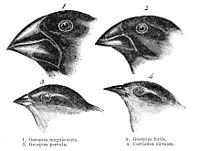
Who eats whom, when and why? Juvenile cannibalism in fish Asian seabass
Sign Up to like & getrecommendations! Published in 2017 at "Aquaculture and Fisheries"
DOI: 10.1016/j.aaf.2016.12.001
Abstract: While juvenile cannibalism plays an important role in the evolution of organisms in natural populations, it is a serious problem in aquaculture. A number of genetic and environmental factors result in different rates of cannibalism.… read more here.
Keywords: cannibalism fish; cannibalism; juvenile cannibalism; kin discrimination ... See more keywords

Kin discrimination promotes horizontal gene transfer between unrelated strains in Bacillus subtilis
Sign Up to like & getrecommendations! Published in 2021 at "Nature Communications"
DOI: 10.1038/s41467-021-23685-w
Abstract: Bacillus subtilis is a soil bacterium that is competent for natural transformation. Genetically distinct B. subtilis swarms form a boundary upon encounter, resulting in killing of one of the strains. This process is mediated by… read more here.
Keywords: kin discrimination; gene transfer; gene; bacillus subtilis ... See more keywords

Does kin discrimination promote cooperation?
Sign Up to like & getrecommendations! Published in 2020 at "Biology Letters"
DOI: 10.1098/rsbl.2019.0742
Abstract: Genetic relatedness is a key driver of the evolution of cooperation. One mechanism that may ensure social partners are genetically related is kin discrimination, in which individuals are able to distinguish kin from non-kin and… read more here.
Keywords: level cooperation; social partners; kin discrimination; average level ... See more keywords

Discrimination Experiments in Entamoeba and Evidence from Other Protists Suggest Pathogenic Amebas Cooperate with Kin to Colonize Hosts and Deter Rivals
Sign Up to like & getrecommendations! Published in 2019 at "Journal of Eukaryotic Microbiology"
DOI: 10.1111/jeu.12673
Abstract: Entamoeba histolytica is one of the least understood protists in terms of taxa, clone, and kin discrimination/recognition ability. However, the capacity to tell apart same or self (clone/kin) from different or nonself (nonclone/nonkin) has long… read more here.
Keywords: discrimination experiments; kin discrimination; clone kin; discrimination recognition ... See more keywords